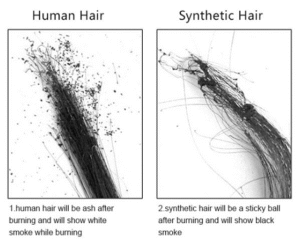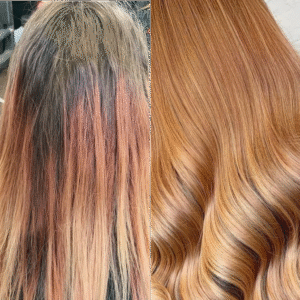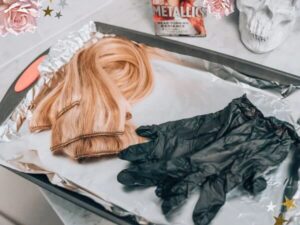Can Hair Extensions Be Dyed or Chemically Treated1 After Purchase?
Yes, human hair extensions can generally be dyed or chemically treated after purchase, but synthetic hair extensions cannot be dyed with traditional hair dyes. It's important to understand the type of extensions you have before attempting any dyeing or chemical treatment. Let's delve into why this distinction matters and how it impacts your choices.
Can Hair Extensions Be Dyed?
Hair extensions have the power to transform your look overnight, but the ability to dye them post-purchase depends heavily on their composition. Human hair extensions are like blank canvases, waiting to be customized into whatever creative vision you have. On the other hand, synthetic extensions often resist traditional dyes, creating hurdles for anyone dreaming of a hair transformation.
Dive Deeper: Understanding Hair Extension Types
Human Hair Extensions2: These can generally be dyed because they behave like natural hair. When considering brands like Plucharm Hair3, known for their high-quality extensions, the capability to change their color is a major advantage. At Plucharm Hair3, we leverage over a decade of experience to ensure that every hair extension meets the highest standards, allowing for seamless color customization.
Synthetic Hair Extensions4: These are made from specialized fibers that do not absorb dye in the same way human hair does. Attempting to dye them with traditional hair dyes can result in disastrous colors, or worse, damaged fibers. Synthetic extensions may provide a cost-effective alternative, but their resistance to color changes limits versatility.
| Extension Type | Dyeable5 | Key Considerations |
|---|---|---|
| Human Hair | Yes | Can be treated like natural hair, best used with professional dyes. |
| Synthetic Hair | No | Limited to specific synthetic dyes; traditional dyes will not work. |
Can I Get My Hair Dyed if There is a Product in It?
Dyeing hair that's already been treated with products is a common concern. This situation can make or break the result of your color transformation.
Dive Deeper: Clearing Product Residue Before Dyeing
It's crucial to ensure that your hair is free from heavy styling products or treatments before applying dye. Residue from these products interferes with the dye application, leading to patchy or uneven results.
- Shampoo and Condition: Use a clarifying shampoo to remove any product buildup.
- Dry Thoroughly: Ensure your extensions are completely dry before dyeing; any moisture can dilute the dye and affect the outcome.
Anecdotally, I've encountered numerous clients who face this predicament. One client named Anna, a regular at my salon, decided to dye her Plucharm Hair3 extensions after they had been treated with numerous styling products. After a thorough cleanse, the dye application was a success, brightening her extensions without any unevenness.
Can Hair Salons Dye Extensions?
The expertise of a professional can make all the difference when dyeing extensions. But what should you expect when you bring your extensions to a salon?
Dive Deeper: Professional Care for Hair Extensions6
Hair salons bring not just expertise, but also access to salon-quality products that can safeguard the integrity of your extensions. Here’s a detailed look at what professionals offer:
- Expert Color Matching7: Professionals are trained in color theory, ensuring a precise match with your natural hair.
- Safe Dye Application: A professional can apply the dye evenly and minimize damage using top-tier products tailored for extensions.
- Tailored Advice: Based on the type and condition of your extensions, they can provide specific guidance, such as what brands work best with certain dyes—an insider tip often kept under wraps.
Is Dyed Hair Considered Chemically Treated1?
The term "chemically treated" often comes with fears of damage and high maintenance. But does dyeing extensions place them under this category?
Dive Deeper: The Impact of Dye on Hair
Once hair is dyed, it is indeed considered chemically treated. This term itself can shape how you care for your extensions.
What This Means for Extension Care:
- Moisturizing is Key8: Chemically treated hair needs more moisture. Use hydrating conditioners to maintain softness in your dyed extensions.
- Heat Protection9: Always use heat protectants to shield hair from further damage during styling.
Existing in the world of extensions means accepting that all beauty comes with care requirements. Plucharm Hair3 understands this intrinsic link between dyeing and care, having prioritized top-notch quality to ensure that our extensions withstand the trials of change while maintaining their luster.
Conclusion
In this colorful journey of hair dye and extensions, understanding what you can or cannot do often sets the stage for captivating results. Human hair extensions offer you the flexibility and freedom to experiment without compromising the quality. Meanwhile, for synthetic hair extensions, the rule is to embrace their given hues unless working with specialized products. When navigation leaves you uncertain, professional salons, such as those that partner with Plucharm Hair3, are always a haven, offering expertise and care. Whether you're a salon owner, like Lisa with a discerning eye for quality, or an enthusiast dreaming of a new look, knowledge reigns supreme in achieving the best hair day, every day.
-
Find out how dyeing hair classifies it as chemically treated and what care it requires. ↩ ↩
-
Explore the advantages of human hair extensions, including their dyeability and natural look, to enhance your hair transformation. ↩
-
Discover why Plucharm Hair is renowned for its quality and how it can elevate your hair extension experience. ↩ ↩ ↩ ↩ ↩
-
Learn about the limitations of synthetic hair extensions and why they can't be dyed like human hair. ↩
-
Understand the term 'dyeable' and its significance in choosing the right hair extensions for your needs. ↩
-
Learn about the specialized services salons provide for hair extensions, ensuring optimal care and results. ↩
-
Delve into the techniques salons use for perfect color matching, ensuring a seamless blend with your natural hair. ↩
-
Explore the importance of moisturizing for maintaining the health and softness of chemically treated hair extensions. ↩
-
Discover essential tips for protecting your dyed hair extensions from heat damage during styling. ↩




